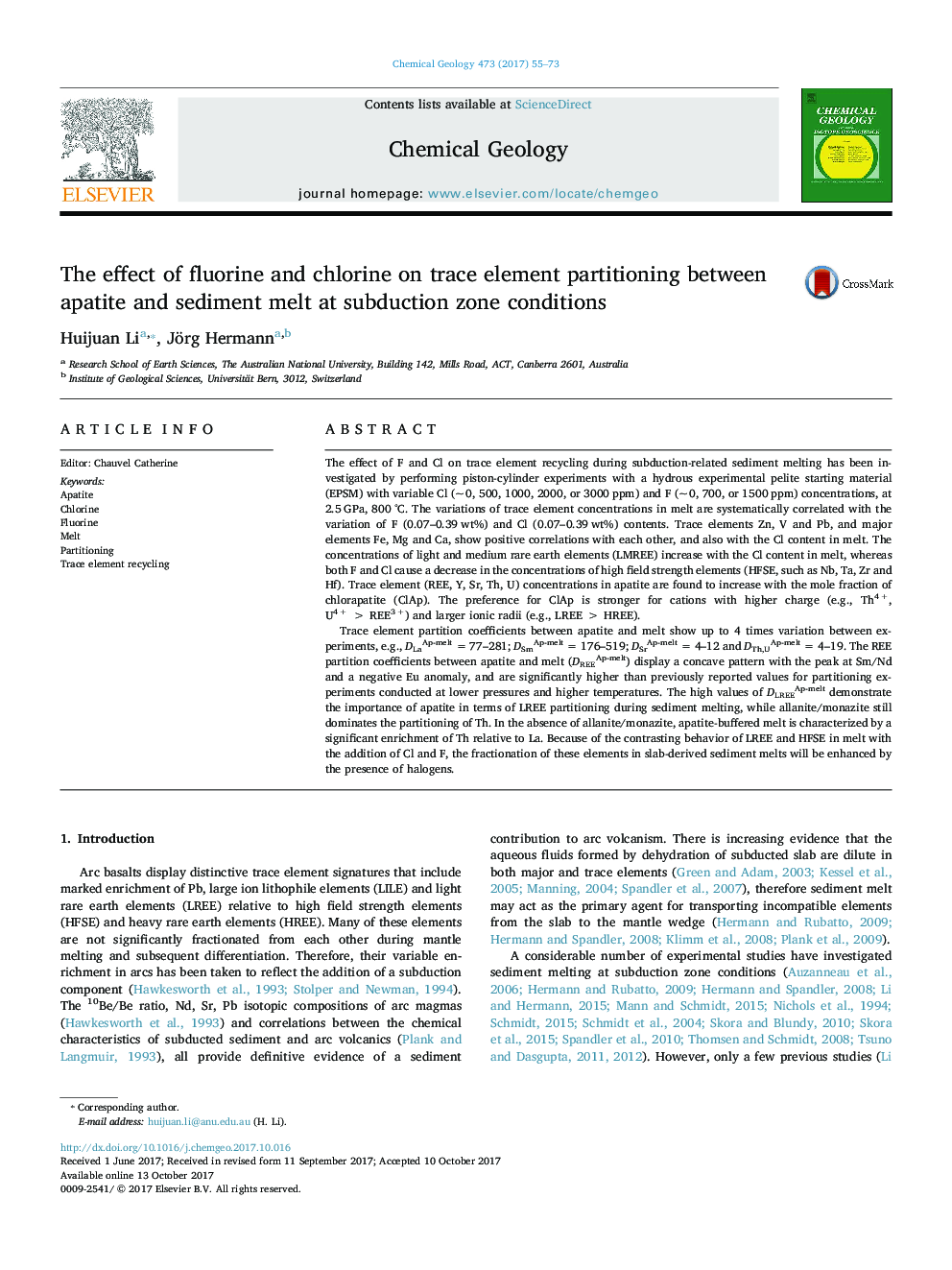| Article ID | Journal | Published Year | Pages | File Type |
|---|---|---|---|---|
| 8910528 | Chemical Geology | 2017 | 19 Pages |
Abstract
Trace element partition coefficients between apatite and melt show up to 4 times variation between experiments, e.g., DLaAp-melt = 77-281; DSmAp-melt = 176-519; DSrAp-melt = 4-12 and DTh,UAp-melt = 4-19. The REE partition coefficients between apatite and melt (DREEAp-melt) display a concave pattern with the peak at Sm/Nd and a negative Eu anomaly, and are significantly higher than previously reported values for partitioning experiments conducted at lower pressures and higher temperatures. The high values of DLREEAp-melt demonstrate the importance of apatite in terms of LREE partitioning during sediment melting, while allanite/monazite still dominates the partitioning of Th. In the absence of allanite/monazite, apatite-buffered melt is characterized by a significant enrichment of Th relative to La. Because of the contrasting behavior of LREE and HFSE in melt with the addition of Cl and F, the fractionation of these elements in slab-derived sediment melts will be enhanced by the presence of halogens.
Related Topics
Physical Sciences and Engineering
Earth and Planetary Sciences
Geochemistry and Petrology
Authors
Huijuan Li, Jörg Hermann,
